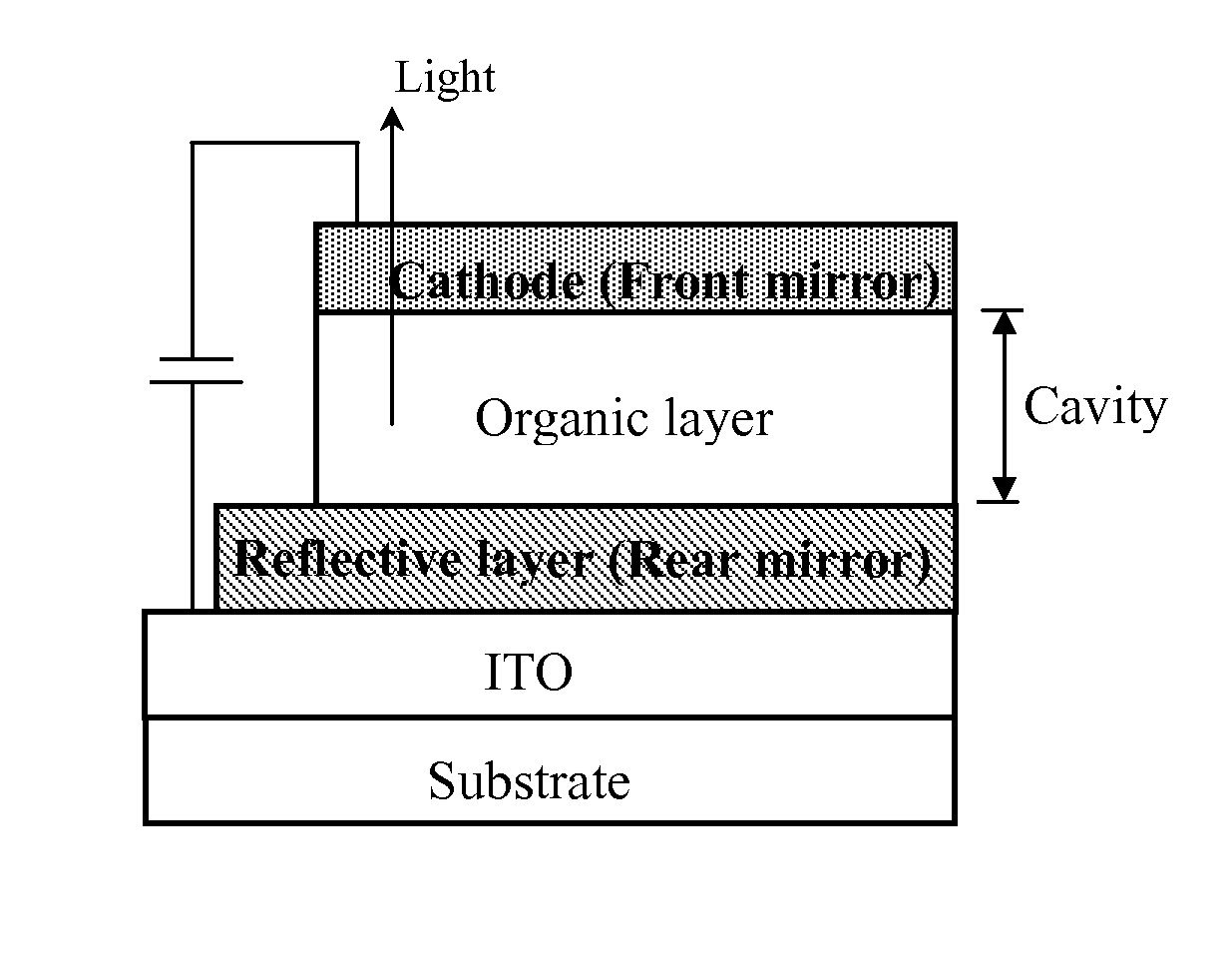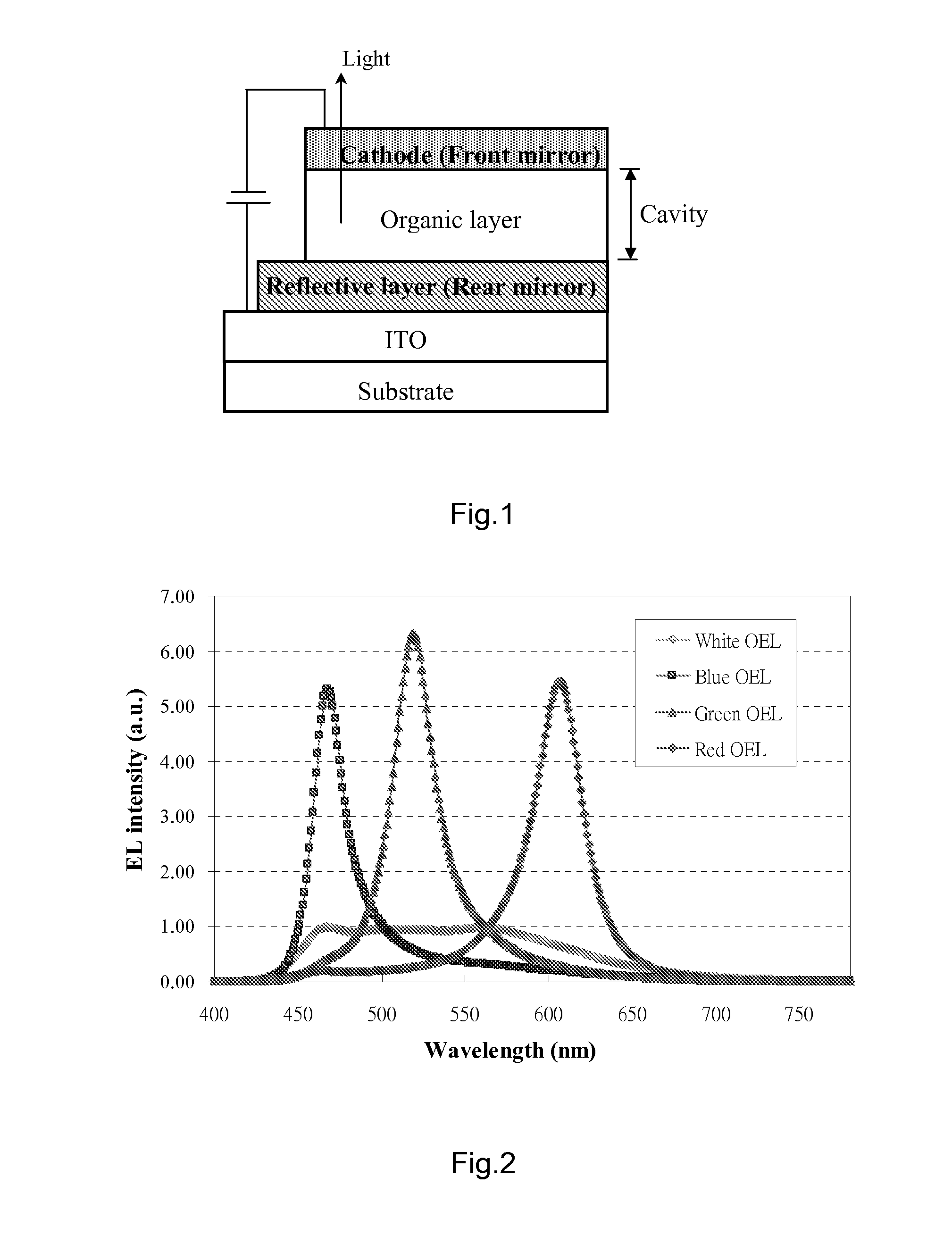Fabrication of full-color OLED panel using micro-cavity structure
- Summary
- Abstract
- Description
- Claims
- Application Information
AI Technical Summary
Problems solved by technology
Method used
Image
Examples
example 1
Using White Organic Electroluminescence on Emission Layer 6
[0050]The example uses the bottom-emitting WRGB full-color OLED shown in FIG. 4. The hole injection layer 4 is m-MTDATA:F4-TCNQ (3%), and the thickness of white, blue, green and red light devices is 55 nm, 55 nm, 75 nm, and 105 nm, respectively. The structure of the emission layer 6 is NPB (15 nm) / NPB:Rubrene (5 nm) / DPVBi:BCzVBi (15 nm) / DPVBi:DCJTB (1 nm), and the electron transport layer 7 is Alq3 (20 nm). The total-reflective metal cathode 8 is LiF (0.7 nm) / Al (180 nm), and the semi-reflective metal anode 3 is Ag (50 nm). The Ag membrane on the ITO electrode 2 of the blue, green, and red light OLEDs must be processed with 100 watt O2 plasma for 30 to 180 seconds to increase the work function of Ag to enhance the efficiency of hole injection.
[0051]FIGS. 8 & 9 show the actual measured values and simulated values of electroluminescence spectrum and CIE chromaticity coordinates of white OLED under circuit of 50 mA / cm2, and blu...
example 2
Using Green Organic Electroluminescence on Emission Layer 6
[0054]On the other hand, the emission layer 6 in our invention also can use the green organic electroluminescence. We take the full-color bottom-emitting OLED in FIG. 5 as an example. The composition of the hole injection layer 4 is m-MTDATA:F4-TCNQ (3%) (x nm), and the thickness (x) for blue, green, and red light are 70 nm, 85 nm, and 115 nm, respectively. The structure of the emission layer 6 is NPB (20 nm) / Alq3 (20 nm), and the electron transport layer 7 is Alq3 (20 nm). The total reflective metal cathode 8 is LiF (0.7 nm) / Al (180 nm), and the semi-reflective metal anode 3 is Ag (50 nm). The Ag membrane on ITO 2 of the blue, green, and red light OLEDs must be processed with 100 watt O2 plasma for 30 to 180 seconds to increase the work function of Ag to elevate the efficiency of hole injection.
[0055]FIGS. 12 & 13 show the actual measured values and simulated values of electroluminescence spectrum and CIE chromaticity coord...
PUM
 Login to View More
Login to View More Abstract
Description
Claims
Application Information
 Login to View More
Login to View More - R&D
- Intellectual Property
- Life Sciences
- Materials
- Tech Scout
- Unparalleled Data Quality
- Higher Quality Content
- 60% Fewer Hallucinations
Browse by: Latest US Patents, China's latest patents, Technical Efficacy Thesaurus, Application Domain, Technology Topic, Popular Technical Reports.
© 2025 PatSnap. All rights reserved.Legal|Privacy policy|Modern Slavery Act Transparency Statement|Sitemap|About US| Contact US: help@patsnap.com



